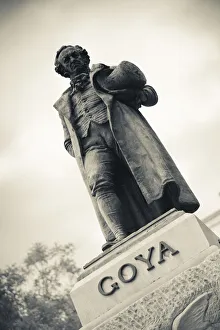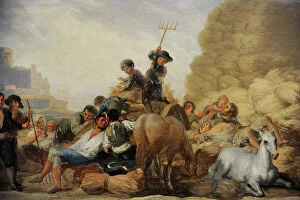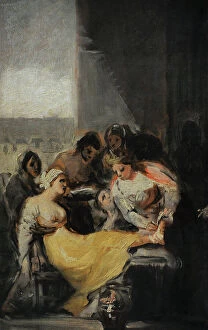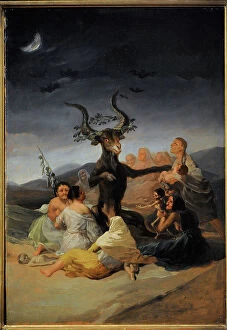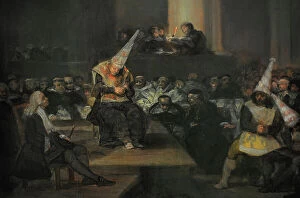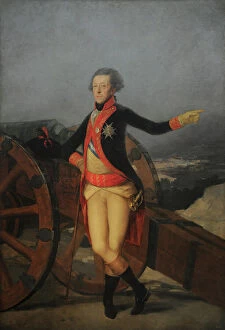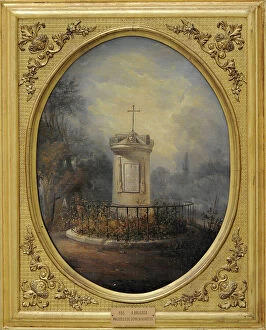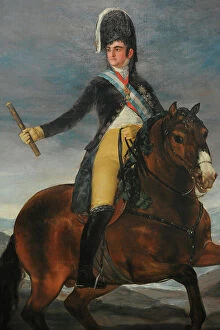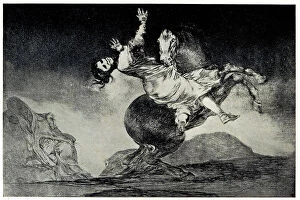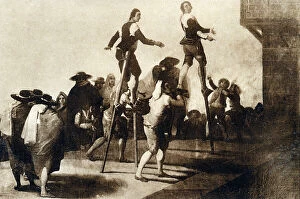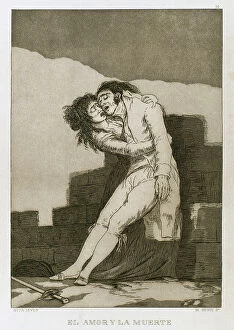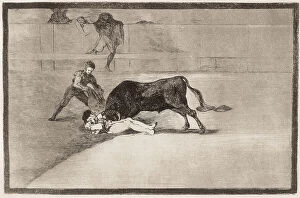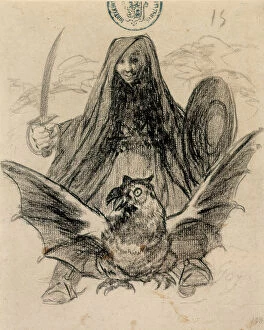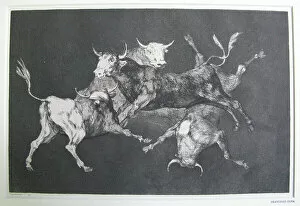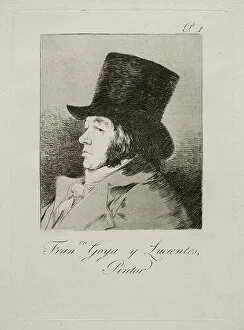Francisco Goya Collection (page 6)
Francisco Goya was a Spanish painter and printmaker who lived from 1746 to 1828
1,683 items
All Professionally Made to Order for Quick Shipping
-
Francisco Goya Collection
Francisco Goya was a Spanish painter and printmaker who lived from 1746 to 1828. He is considered one of the most important artists of the late 18th and early 19th centuries. His works span a range of genres, including portraiture, landscape painting, history painting, and genre scenes. Goya's work is characterized by its expressive use of light and shadow as well as its bold brushwork. His works often depict everyday life in Spain during his lifetime, with an emphasis on social issues such as poverty and war. Goya's influence can be seen in later generations of painters such as Edouard Manet and Pablo Picasso. He is remembered today for his technical skill, innovative approach to composition, and ability to capture emotion in his paintings.
+
Our beautiful Wall Art and Photo Gifts include Framed Prints, Photo Prints, Poster Prints, Canvas Prints, Jigsaw Puzzles, Metal Prints and so much more
The Francisco Goya collection from Media Storehouse is a stunning array of wall art, framed prints, photo prints, canvas prints, jigsaw puzzles and greeting cards that showcase the works of one of Spain's most celebrated artists. Francisco Goya was known for his unique style that blended traditional Spanish themes with modern techniques to create some of the most iconic artworks in history. Our collection features some of his best-known pieces such as "The Third Of May 1808" and "Saturn Devouring His Son", which have been reproduced using high-quality printing techniques to ensure that every detail is captured perfectly. Whether you're looking for a statement piece for your living room or an elegant addition to your office decor, the Francisco Goya collection has something for everyone. With its wide range of products and affordable prices, our collection is perfect for anyone who loves art and wants to bring a touch of Spanish culture into their home or workspace.
+
What are Francisco Goya (Artists Arts) art prints?
Francisco Goya was a renowned Spanish artist who lived from 1746 to 1828. He is widely regarded as one of the most influential artists in history, and his works are highly sought after by art enthusiasts around the world. We offer a wide range of Francisco Goya art prints that capture the essence of his unique style. Goya's artworks are known for their dark themes and vivid imagery, which often explore political and social issues of his time. His paintings and etchings have been praised for their technical skill and emotional depth, making them timeless pieces that continue to inspire generations. Our collection includes some of Goya's most famous works such as "The Third of May 1808" and "Saturn Devouring His Son". These prints are available in various sizes and formats, allowing you to choose the perfect piece for your home or office decor. Whether you're an avid collector or simply appreciate fine art, our Francisco Goya art prints are sure to impress.
+
What Francisco Goya (Artists Arts) art prints can I buy from Media Storehouse?
We offer a wide range of Francisco Goya art prints that showcase the artist's unique style and technique. You can choose from various collections, including his famous "Black Paintings," which depict dark and haunting scenes with incredible detail. Other popular options include his portraits of Spanish royalty, such as King Charles IV and Queen Maria Luisa, as well as his satirical etchings known as "Los Caprichos." Additionally, Media Storehouse also offers reproductions of some of Goya's most iconic works like "The Third of May 1808" and "The Naked Maja." Each print is produced using high-quality materials to ensure that the colors are vibrant and long-lasting. Whether you're looking for a piece to add to your personal collection or want to give someone a special gift, we have an extensive selection of Francisco Goya art prints that will suit any taste or budget.
+
How do I buy Francisco Goya (Artists Arts) art prints?
To buy Francisco Goya art prints from Media Storehouse, you can browse our collection of artwork online. Once you have found a print that you like, simply add it to your cart and proceed to checkout. You will need to provide your shipping and payment information at this point. We offer a range of different sizes and formats for their prints, so be sure to select the one that best suits your needs. We also offer framing options if you prefer a ready-to-hang piece. When purchasing art prints from Media Storehouse, it is important to note that they are intended for personal use only and cannot be used commercially without permission. Additionally, acrylic prints may not be available for all artworks. Buying Francisco Goya art prints from Media Storehouse is a simple process that allows you to bring beautiful artwork into your home or office space.
+
How much do Francisco Goya (Artists Arts) art prints cost?
As We offer a wide range of Francisco Goya art prints, the cost may vary depending on the size and type of print selected. The price range for these prints can be influenced by factors such as the rarity of the artwork, its condition, and whether it is an original or reproduction. Generally speaking, Francisco Goya's art prints are highly sought after due to their historical significance and artistic value. We provide customers with a diverse selection of high-quality art prints that showcase some of Francisco Goya's most iconic works. These include his famous paintings like "The Third of May 1808" and "Saturn Devouring His Son." Whether you're looking for a small print to add to your collection or a larger piece to display in your home or office space, we have something for everyone.
+
How will my Francisco Goya (Artists Arts) art prints be delivered to me?
We take great care in ensuring that your Francisco Goya art prints are delivered to you safely and securely. We use high-quality packaging materials to protect your artwork during transit, including sturdy cardboard tubes for rolled prints and flat cardboard boxes for framed prints. Our team of experienced professionals carefully pack each print by hand to ensure it arrives at your doorstep in pristine condition. We also provide tracking information so you can keep an eye on the progress of your delivery. Once your order is shipped, it will be delivered directly to the address you provided during checkout. Our shipping partners are reliable and efficient, ensuring that your package arrives in a timely manner. We understand how important these artworks are to our customers, which is why we go above and beyond to make sure they arrive safely and promptly. You can trust us with all of your Francisco Goya art print needs.





